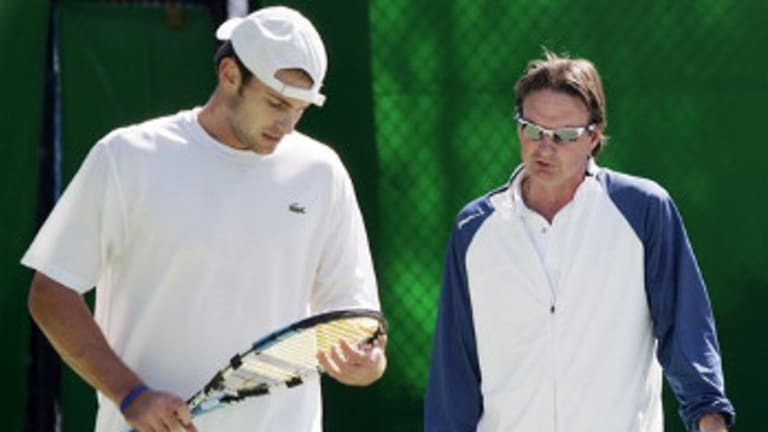The next time Maria Sharapova loses to Serena Williams, she just may drop all that “She’s a great player, she was just too good today” hooey and snarl, “I’ll follow that b to the ends of the earth. . .”
That’s the first thing that occurred to me when I read that Jimmy Connors is Sharapova’s new coach. The announcement was made recently at Sharapova’s website. This will be a marriage of Midwestern punk and Russian princess, creating what. . . Maria, the punkess?
That now-famous line I quoted was first uttered by Connors (with a slightly different curse) at Wimbledon in 1978, when he was asked if he would depart from his customary habit and travel to Australia at the end of the year if it meant preventing his rival Bjorn Borg from completing a career Grand Slam (at the time, the Australian Open was a grass-court event which began in late December). He spat out that brag after taking another whipping from the quiet, dignified Swede in the Wimbledon final.
Of course, Connors may not infuse (or is it poison?) Sharapova’s spirit with the animus that was one of his signal traits. It didn’t really work when Connors formed his last coaching partnership, with Andy Roddick. The protégé remained his edgy but witty and thoughtful self, in marked contrast to his ignorant, crass coach. More to the point, Connors was useful in various ways, but he never did get Roddick over the finish line of a Grand Slam. And that brings us to the question of the moment: “Why Connors?”
It’s a good question to which I can find no satisfying answer.
I say that partly because of the context. Thomas Hogstedt had been Sharapova’s coach for the past three years. A quiet, thoughtful Swede who avoided the limelight (shades of Borg!), Hogstedt re-invented Sharapova as a versatile player, and the net result for the current WTA No. 2 was a career Grand Slam, secured at last year’s French Open.
Hogstedt successfully navigated a complex situation when he signed on as (then) “co-coach” with Sharapova’s hitting partner, Michael Joyce, while both labored in the shadow of Sharapova’s father, Yuri. At the time, Sharapova was ranked No. 18 and spinning her wheels while attempting a comeback from shoulder surgery.
Hogstedt began to get results almost immediately and consistently. In fact, he may be the most underrated coach out there. But the two quietly called it quits soon after one of Sharapova’s few bad losses in recent years, a second-round failure at Wimbledon against world No. 131 Michelle Larcher de Brito.
It appears from Sharapova’s statement that the decision to separate was Hogstedt’s. The only part of the statement that isn’t boilerplate is: “Due to personal issues, he was not able to travel in the near future.”
Connors not only has very big shoes to fill, he’s got very different feet from the man he’s succeeding. Right off the bat, it will be interesting to see how the guy in the Members-Only jacket will get along in Sharapova’s glitzy sphere. He also brings a lot more personal baggage—and clout—to the job than did Hogstedt.
